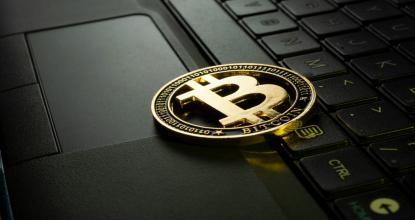Exploring Blockchain Technology

29 February, 2024
Decentralized Ledger: Unlike traditional databases managed by a central authority, a blockchain is maintained by a network of nodes (computers), each holding a copy of the entire ledger.
Immutable Records: Transactions are grouped into blocks and cryptographically linked to the previous block, creating an unalterable chain. Once data is recorded, it cannot be retroactively changed without consensus.
Consensus Mechanisms: To add a new block, participants follow protocols like Proof of Work (PoW) or Proof of Stake (PoS), ensuring that all nodes agree on the ledger’s state.
2. Key Components of a Blockchain
Exploring Blockchain Technology
Blockchain has emerged as one of the most transformative technologies of the 21st century—ushering in new paradigms for finance, supply chains, identity, and beyond. At its core, a blockchain is a distributed ledger that records transactions in a secure, transparent, and tamper-resistant manner. This guide will walk you through the fundamentals of how blockchains work, where they’re being applied today, and what the future might hold.
1. What Is a Blockchain?
1. What Is a Blockchain?
Decentralized Ledger: Unlike traditional databases managed by a central authority, a blockchain is maintained by a network of nodes (computers), each holding a copy of the entire ledger.
Immutable Records: Transactions are grouped into blocks and cryptographically linked to the previous block, creating an unalterable chain. Once data is recorded, it cannot be retroactively changed without consensus.
Consensus Mechanisms: To add a new block, participants follow protocols like Proof of Work (PoW) or Proof of Stake (PoS), ensuring that all nodes agree on the ledger’s state.
2. Key Components of a Blockchain
Blocks: Containers for a batch of transactions, each block includes a timestamp, a nonce (in PoW systems), and the hash of the previous block.
Nodes: Individual computers that validate and relay transactions, maintaining the network’s integrity.
Cryptographic Hashing: Algorithms like SHA-256 secure data by turning any input into a fixed-length string—any change to the input produces a wholly different hash.
Smart Contracts: Self-executing code that runs on blockchains like Ethereum, automatically enforcing agreed-upon rules when predefined conditions are met.
3. Popular Blockchain Platforms
Bitcoin: The first and largest blockchain by market capitalization, designed for peer-to-peer digital cash using PoW mining.
Ethereum: Pioneered smart contracts and decentralized applications (dApps), transitioning to a PoS consensus to improve scalability and energy efficiency.
Binance Smart Chain & Polkadot: Offer high-throughput environments for DeFi, NFTs, and cross-chain interoperability.
Hyperledger Fabric & Corda: Enterprise-grade, permissioned blockchains tailored for supply chain, trade finance, and identity solutions.
4. Real-World Applications
Financial Services & DeFi: Decentralized exchanges, lending platforms, and tokenized assets democratize access to financial markets without traditional intermediaries.
Supply Chain Management: Provenance tracking on blockchains ensures product authenticity—from farm to fork—and reduces fraud.
Digital Identity: Self-sovereign identity frameworks let users control their personal data, granting permissions only when needed.
Healthcare Records: Secure, immutable patient records improve interoperability between providers while safeguarding privacy.
Tokenization of Assets: Real-world assets—real estate, art, commodities—can be fractionalized into digital tokens, boosting liquidity and accessibility.
5. Benefits & Challenges
Benefits:
Transparency: Open ledgers increase trust and accountability.
Security: Cryptographic safeguards and decentralization mitigate single points of failure.
Efficiency: Automated processes (smart contracts) reduce friction and settlement times.
Challenges:
Scalability: Balancing decentralization with transaction throughput remains a hurdle.
Regulation: Navigating a patchwork of global regulations on digital assets and data privacy.
Energy Consumption: PoW networks demand significant power, prompting shifts toward greener consensus models.
6. The Road Ahead
Layer-2 & Sharding: Solutions like rollups and sharding aim to boost blockchain throughput by offloading transactions or splitting the network into parallel segments.
Interoperability: Protocols enabling seamless communication between different blockchains will unlock universal liquidity and cross-chain assets.
Enterprise Adoption: Continued integration of permissioned blockchains into corporate workflows will drive large-scale deployments in logistics, finance, and government.
Decentralized Governance: Evolving DAO (Decentralized Autonomous Organization) frameworks promise community-driven decision-making for public goods and platform upgrades.
Blockchain technology is no longer a futuristic concept—it’s the backbone of countless innovations reshaping industries and redefining value exchange. By understanding its core principles, exploring leading platforms, and recognizing both its potential and limitations, you equip yourself to participate in the digital economy of tomorrow.
Ready to dive deeper? Explore our advanced guides, experiment with smart contracts, or stake tokens in your favorite PoS network—your journey into blockchain begins today.
Nodes: Individual computers that validate and relay transactions, maintaining the network’s integrity.
Cryptographic Hashing: Algorithms like SHA-256 secure data by turning any input into a fixed-length string—any change to the input produces a wholly different hash.
Smart Contracts: Self-executing code that runs on blockchains like Ethereum, automatically enforcing agreed-upon rules when predefined conditions are met.
3. Popular Blockchain Platforms
Bitcoin: The first and largest blockchain by market capitalization, designed for peer-to-peer digital cash using PoW mining.
Ethereum: Pioneered smart contracts and decentralized applications (dApps), transitioning to a PoS consensus to improve scalability and energy efficiency.
Binance Smart Chain & Polkadot: Offer high-throughput environments for DeFi, NFTs, and cross-chain interoperability.
Hyperledger Fabric & Corda: Enterprise-grade, permissioned blockchains tailored for supply chain, trade finance, and identity solutions.
4. Real-World Applications
Financial Services & DeFi: Decentralized exchanges, lending platforms, and tokenized assets democratize access to financial markets without traditional intermediaries.
Supply Chain Management: Provenance tracking on blockchains ensures product authenticity—from farm to fork—and reduces fraud.
Digital Identity: Self-sovereign identity frameworks let users control their personal data, granting permissions only when needed.
Healthcare Records: Secure, immutable patient records improve interoperability between providers while safeguarding privacy.
Tokenization of Assets: Real-world assets—real estate, art, commodities—can be fractionalized into digital tokens, boosting liquidity and accessibility.
5. Benefits & Challenges
Benefits:
Transparency: Open ledgers increase trust and accountability.
Security: Cryptographic safeguards and decentralization mitigate single points of failure.
Efficiency: Automated processes (smart contracts) reduce friction and settlement times.
Challenges:
Scalability: Balancing decentralization with transaction throughput remains a hurdle.
Regulation: Navigating a patchwork of global regulations on digital assets and data privacy.
Energy Consumption: PoW networks demand significant power, prompting shifts toward greener consensus models.
6. The Road Ahead
Layer-2 & Sharding: Solutions like rollups and sharding aim to boost blockchain throughput by offloading transactions or splitting the network into parallel segments.
Interoperability: Protocols enabling seamless communication between different blockchains will unlock universal liquidity and cross-chain assets.
Enterprise Adoption: Continued integration of permissioned blockchains into corporate workflows will drive large-scale deployments in logistics, finance, and government.
Decentralized Governance: Evolving DAO (Decentralized Autonomous Organization) frameworks promise community-driven decision-making for public goods and platform upgrades.
Blockchain technology is no longer a futuristic concept—it’s the backbone of countless innovations reshaping industries and redefining value exchange. By understanding its core principles, exploring leading platforms, and recognizing both its potential and limitations, you equip yourself to participate in the digital economy of tomorrow.
Ready to dive deeper? Explore our advanced guides, experiment with smart contracts, or stake tokens in your favorite PoS network—your journey into blockchain begins today.




